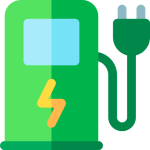
When you’re trying to herd three kids, a dog, and a week’s worth of groceries, the last thing on your mind is shaving milliseconds off your 0-100km/h sprint. Or is it? Enter the 2025 BYD Sealion 8 Premium—a seven-seat, Plug-in Hybrid Electric Vehicle (PHEV) SUV that has decided the answer to the question, “Does a family car need to behave like a sports car?” is a resounding, audacious “Yes.”
BYD, the Chinese automotive titan, is no stranger to shaking up the established order. But with the Sealion 8, they haven’t just challenged the status quo; they’ve created a bizarre, compelling, and frankly astonishing performance crossover that forces a fundamental re-evaluation of what a large family hauler should be.
🚀 The Shock and Awe of Performance: 0-100km/h in a Blink
Let’s start with the statistic that will make you spit out your morning coffee: the Sealion 8 Premium AWD, thanks to its Dual Mode Powerful (DM-P) hybrid system, can rocket from 0 to 100km/h in a claimed 4.9 seconds.
For context, that’s faster than many genuine, established sports coupes and hot hatches. It’s an acceleration figure that, until very recently, was the exclusive territory of six-figure performance SUVs from the likes of BMW M or Mercedes-AMG. Yet, here is a practical, three-row, family-focused PHEV—likely priced to aggressively undercut the competition—delivering supercar-lite thrust.
How does BYD pull off this vehicular alchemy? It’s all in the tech. The Premium grade pairs a 1.5-litre turbocharged petrol engine with not one, but two electric motors, delivering a colossal 359kW and 675Nm of system-wide grunt. The electric motors do the heavy lifting off the line, providing instant, addictive torque that shoves you into the beautifully trimmed seatbacks. The petrol engine then assists at higher speeds, creating a relentless, seamless surge of power.
The verdict on the speed is simple: it’s utterly unnecessary for dropping off kindergarteners, yet undeniably thrilling. It transforms mundane freeway merging or overtaking manoeuvres from cautious calculations into playful flicks of the accelerator. The Sealion 8 is a seven-seater with a secret weapon, and its power is the first, most startling sign that this car is different.
🎢 Corner Carving with the Crew: Can an SUV Really Handle?
Speed is one thing, but can this big rig actually handle the twisty bits? The review title certainly suggests it can, and the reason lies in another piece of BYD’s high-tech arsenal: DiSus-C adaptive suspension.
DiSus-C is an active damping system that continuously adjusts the shock absorbers. In ‘Comfort’ mode, it aims to soften the blows of rough pavement, though initial reports suggest the massive 21-inch wheels and low-profile rubber on the Premium grade can still introduce a degree of sharpness and road noise to the ride.
But flick it into ‘Sport’ mode, and the Sealion 8’s personality shifts entirely. The suspension tautens, the steering feels more direct, and the sheer weight of the large SUV is momentarily masked. It tackles corners with a surprising degree of flatness and composure—a nimble, planted feel that you’d never expect from a vehicle of its size and height. It’s an unusual sensation: the family aboard, perhaps a full load of camping gear in the generous 270-litre boot (with the third row up), yet the driver is genuinely enjoying a backroad blast.
Herein lies the central conflict of the Sealion 8 Premium: the same taut setup that gives it sports-car-like reflexes can also compromise the butter-smooth ride comfort that many large SUV buyers prioritise. Is the trade-off worth it? It depends on which parent is driving.
👨👩👧👦 Seven Seats of Luxury and Tech: The Family Side
Forget the warp-speed performance for a moment. At its core, the Sealion 8 is designed to be BYD’s flagship family offering, directly challenging established three-row PHEV rivals like the Mitsubishi Outlander and Kia Sorento.
The good news is, BYD hasn’t skimped on the family credentials:
- Viable Third Row: With its generous 2950mm wheelbase, the third row is surprisingly usable, even for average-sized adults on shorter trips. Crucially, the third row also includes child seat tether points, a major win for families that need flexibility.
- A Cabin of Luxury: Stepping inside, the Sealion 8 delivers on its ‘Premium’ title. You’re greeted by a luxurious, geometric-patterned cabin with high-end switchgear, a 21-speaker sound system, and perhaps the most indulgent features of all: heated and cooled massaging seats in both the first AND second rows.
- BYD’s Signature Tech: The cabin is dominated by the colossal 15.6-inch rotating touchscreen—a feature that’s either a futuristic marvel or an unnecessary distraction, depending on your perspective. It’s paired with a 10.25-inch digital instrument cluster and a full suite of driver-assistance systems.
It’s a masterclass in modern, tech-laden cabin design, offering features that force its established competitors to look seriously under-equipped.
🤔 The Existential Question: Who is This Car For?
So, back to the big question. Does a seven-seat family SUV really need to behave this way?
The Sealion 8 Premium is a car of spectacular contradictions. It’s an eco-conscious PHEV with a useful all-electric range (over 100km NEDC) that makes school run guilt a thing of the past. Yet, it hides a 4.9-second 0-100km/h sprint and an active sports suspension that begs for a racetrack.
The BYD Sealion 8 Premium is not for the average seven-seat SUV buyer. That buyer will likely find the base or mid-spec Dynamic model, with its passive dampers and less aggressive performance, a more comfortable, logical, and perhaps sweeter-driving package.
This car is for the enthusiast parent. It’s for the driver who refuses to let parenthood mean the end of driving enjoyment. It’s for the person who needs the practicality of a three-row SUV but still wants a performance car hiding underneath. It’s the ultimate expression of having your (very fast) cake and eating it too.
✨ Verdict: A New Breed of Family Car
The 2025 BYD Sealion 8 Premium is a glorious, head-scratching anomaly. It’s a statement that family practicality and exhilarating performance are not mutually exclusive—and that the future of the family car, particularly the electric and hybrid future, can be one hell of a ride.
It’s fast, it’s tech-laden, and it’s spacious. It may be slightly compromised on outright ride comfort, but that’s the price you pay for a seven-seater that can genuinely outrun a Golf GTI. BYD isn’t just selling a new car; they’re selling a new idea: that sometimes, even family duty needs a little race mode. And for a certain kind of driver, that’s an irresistible proposition.
Exploring Advanced Technologies and Performance: Sealion 8 Premium vs. Kia Sorento PHEV
Here is a breakdown of the specific BYD technology and a specifications comparison:
🔬 Deep Dive: BYD’s Core Technology
The Sealion 8 Premium AWD is equipped with two of BYD’s most advanced technologies: the DM-P hybrid system and DiSus-C suspension.1
1. BYD DM-P (Dual Mode – Powerful) Hybrid System
The DM-P system is a plug-in hybrid (PHEV) architecture designed to prioritize high performance while maintaining efficiency.2
| Feature | Technical Details | Benefit |
| Architecture | Electric-centric hybrid system (Gen 5 DM). Uses a high-power motor drive and large battery primarily, with the petrol engine as supplementary support. | Provides a driving experience that is smooth, quiet, and responsive like a pure EV, even in hybrid mode. |
| Engine | High-efficiency 1.5-litre four-cylinder turbo-petrol engine (e.g., 110kW/220Nm). Features an ultra-high thermal efficiency (claimed up to 46.06%) and a high compression ratio (e.g., 16:1). | Maximizes the energy used from fuel, leading to ultra-low claimed fuel consumption (e.g., 1.0L/100km combined) and longer overall range. |
| Motors | Dual-motor setup (one front, one rear for AWD) with high power output (up to 359kW combined system power for AWD variants). Utilizes a high-speed Electric Hybrid System (EHS). | Delivers blazing-fast acceleration (e.g., 0-100km/h in 4.9 seconds for AWD), rivaling performance cars, and provides electric All-Wheel Drive. |
| Battery | Large-capacity Blade Battery (Lithium Iron Phosphate – LFP), up to 35.6 kWh for AWD. | Provides a long pure-electric range (up to 152km NEDC, likely over 100km real-world) and superior safety/durability due to the Blade structure. |
2. BYD DiSus-C (Intelligent Damping Body Control System)
DiSus-C is an intelligent, electronically controlled active suspension system that continuously adjusts the damping force of the shock absorbers in real-time.3
| Component | Function | Result |
| Sensors | High-frequency sensors (speed, height, body inertial) constantly collect data on road conditions and vehicle posture. | Detects bumps, turns, acceleration, and braking forces almost instantaneously. |
| Controller | Processes the data and calculates the required damping force for each wheel. | Ensures a unified and stable driving dynamic. |
| Actuators | Electronic dampers adjust the size of the damping control valve opening to control oil flow within the shock absorber. | Minimizes body roll during cornering and lane changes, reduces “squat” during hard acceleration, and lessens “dive” during emergency braking. |
| Overall Effect | The system automatically selects between softer damping (for comfort on rough roads) and harder damping (for stability during dynamic driving). | Offers a superb balance between ride comfort (like a soft SUV) and dynamic handling (like a taut sports car). |
🆚 Specification Comparison: Sealion 8 Premium AWD vs. Kia Sorento PHEV
The Sealion 8 and Sorento PHEV are both three-row plug-in hybrid SUVs, but their specifications reveal distinct philosophies.
| Specification | BYD Sealion 8 Premium (AWD) | Kia Sorento GT-Line PHEV (AWD) |
| Seating | 7-seater | 7-seater |
| PHEV System | DM-P (Dual Mode – Powerful) | 1.6L T-GDI engine + Electric Motor |
| System Power (Combined) | 359 kW (approx. 481 hp) | 195 kW (approx. 261 hp) |
| System Torque (Combined) | 675 Nm | 350 Nm |
| 0-100 km/h | 4.9 seconds | 8.7 seconds (Approx.) |
| EV Battery Capacity | 35.6 kWh (Blade LFP) | 13.8 kWh (Lithium-ion Polymer) |
| EV Range (Claimed) | 152 km (NEDC) | 68 km (WLTP) |
| Claimed Fuel Economy | 1.0 L/100km (NEDC) | 1.6 L/100km (WLTP) |
| Suspension | DiSus-C (Active Adaptive Damping) | Standard Suspension |
| Length (Approx.) | 5,040 mm | 4,815 mm |
| Wheelbase (Approx.) | 2,950 mm | 2,815 mm |
Key Takeaways from the Comparison
- Performance Focus: The Sealion 8’s DM-P system gives it a significant performance advantage, with nearly double the power and a much faster 0-100km/h time compared to the Sorento PHEV.
- Electric Driving: The Sealion 8’s much larger battery (35.6 kWh vs 13.8 kWh) offers a substantially greater all-electric driving range, making short-distance daily commuting potentially fuel-free for a wider range of users.4
- Chassis Technology: The inclusion of DiSus-C adaptive suspension in the Sealion 8 Premium suggests a superior ability to dynamically manage ride comfort and handling stability compared to the Sorento’s standard suspension setup.5
- Size: The Sealion 8 is physically a larger vehicle in both length and wheelbase, which typically translates to more interior and cargo space, particularly for the third row and boot.
About EV Evolution
EV Evolution is the leading online platform dedicated to Australian electric vehicle owners and enthusiasts. We foster a vibrant community, delivering essential EV news and insights, and enhancing user engagement through our innovative, AI-powered chatbot for dynamic discussions. Our mission is to empower Australian electric vehicle owners and enthusiasts by fostering a vibrant, AI-driven online community that connects, informs, and advances the nation’s electric vehicle landscape.




